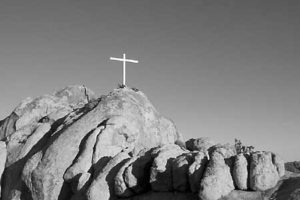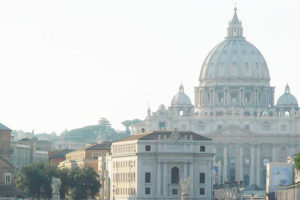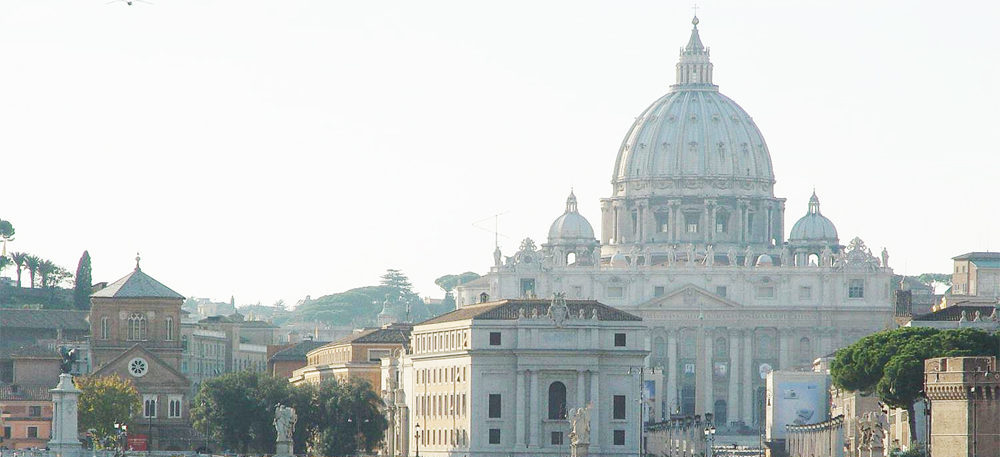Category: Lent
CATHOLIC FAITHLINK: “Fourth Sunday of Lent (Laetare Sunday)” – FishEaters

“The fourth Sunday of Lent is rather unique; like the third Sunday of Advent (‘Gaudete Sunday’), the fourth Sunday of Lent is a break in an otherwise penitential season. The vestments for this day will be rose, as they are on Gaudete Sunday in Advent, and flowers may adorn the Altar. This day is called ‘Laetare Sunday’ (also ‘Rose Sunday’), and takes its name from the opening words of the Mass, the Introit’s ‘Laetare, Jerusalem’ …”
CATHOLIC FAITHLINK: “Lent 2019” – USCCB

“The 2019 Lenten season begins on Ash Wednesday, March 6, for Latin-rite Catholics with Easter Sunday on April 21. During Lent, we are asked to devote ourselves to seeking the Lord in prayer and reading Scripture, to service by giving alms, and to sacrifice self-control through fasting. Many know of the tradition of abstaining from meat on Fridays during Lent, but we are also called to practice self-discipline and fast in other ways throughout the season. Contemplate the meaning and origins of the Lenten fasting tradition in this reflection. In addition, the giving of alms is one way to share God’s gifts—not only through the distribution of money, but through the sharing of our time and talents. As St. John Chrysostom reminds us: “Not to enable the poor to share in our goods is to steal from them and deprive them of life. The goods we possess are not ours, but theirs.” (Catechism of the Catholic Church, no. 2446). …”
CATHOLIC FAITHLINK: “The Divine Sculptor … St. John’s Precautions and Lenten Detachment … St. Benedict Crucifix and Lenten Reading” – Sisters of Carmel, Carmelite Monastery of the Sacred Hearts (Colorado Springs) Newsletter 3.4.19

“… you will recall reading or hearing about the three ways of doing penance: fasting, prayer, alms-giving. … These holy practices are important and salutary, as Our Lord Jesus Himself instructs us (St. Matthew 6:1-18). In making use of these practices, it is essential that we have a plan for Lent, some sort of program for ourselves, for without that, we enter Lent as on uncharted waters, floating aimlessly. We should prepare with careful soul searching and a good examination of conscience, focusing especially on the dominant fault/faults of our character, our most frequently committed sins – where we fail God most often. With this good beginning, we can make a pact with the good Lord that we will strive generously to be truly good and no longer offend Him in these ways. And we will achieve, with the help of His grace, the soul-renewal that Lent is meant to be for us. …”
CATHOLIC FAITHLINK: “Reflections for Ash Wednesday” – Vatican News/ Fr. Antony Kadavil
CATHOLIC FAITHLINK: “Fasting and Abstinence at Lent” – CNA

“… Jesus stayed in the desert for 40 days. When he left the desert, he began calling his disciples and apostles, as the mission that led to his crucifixion had begun.
The Church says that Lent is a 40-day period of unity with “the mystery of Jesus in the desert.”
By sacrificing small things, as well as fasting, praying, and giving to charity, Catholics are invited to experience a period of prayer like the one Jesus experienced, and to prepare themselves to resist Satan’s temptation, and fulfill the mission God has given the Church. …”
CATHOLIC FAITHLINK: “Code of Canon Law: Days of Penance – [Fasting and Abstinence]” – VaticanVa

“Days of Penance
Can. 1249 The divine law binds all the Christian faithful to do penance each in his or her own way. In order for all to be united among themselves by some common observance of penance, however, penitential days are prescribed on which the Christian faithful devote themselves in a special way to prayer, perform works of piety and charity, and deny themselves by fulfilling their own obligations more faithfully and especially by observing fast and abstinence, according to the norm of the following canons.
Can. 1250 The penitential days and times in the universal Church are every Friday of the whole year and the season of Lent.
Can. 1251 Abstinence from eating meat or some other food according to the prescripts of the conference of bishops is to be observed on ,of abstinence binds those who have completed their fourteenth year of age. The law of fasting, however, binds all those who have attained their majority until the beginning of their sixtieth year. Nevertheless, pastors of souls and parents are to take care that minors not bound by the law of fast and abstinence are also educated in a genuine sense of penance.
Can. 1253 The conference of bishops can determine more precisely the observance of fast and abstinence as well as substitute other forms of penance, especially works of charity and exercises of piety, in whole or in part, for abstinence and fast.”
CATHOLIC FAITHLINK: “A Reflection on Lenten Fasting” – USCCB/ Rev. Daniel Merz

“In the early Church and, to a lesser extent still today, there were two fasts. There was the “total fast” that preceded all major feasts or sacramental events. The ancient name for this fast was “statio” from the verb “sto, stare” to stand watch, on guard or in vigil. The second fast was a fast of abstinence from certain foods, e.g., meats or fats. This was more an act of self-discipline and self-control. The statio fast was total and a means of watching and waiting…i.e. for something. The fast of abstinence was more general and personal, to help oneself be more disciplined or self-controlled. The total fast is still kept today prior to reception of Holy Communion. Following Holy Communion, the total fast ceases because Jesus had explicitly stated that we don’t fast when the bridegroom is here, in other words, what we’re keeping vigil for has arrived, the wait is over. On the other hand, the fast of abstinence was allowed on Sundays because the continuity of abstinence can be important for it to be effective. …”
CATHOLIC FAITHWATCH: “Pope’s Lenten Message calls for conversion” – Vatican News

“Pope Francis is calling on the faithful not to let the Lenten season of grace pass in vain, and to live as children of God acknowledging and obeying His law, in particular in regards to our brothers and sisters and to creation.
In this year’s Lenten message, the Pope invites believers to prepare to celebrate the paschal mystery with mind and heart renewed, warning that ‘Sin leads man to consider himself the god of creation, to see himself as its absolute master and to use it, not for the purpose willed by the Creator but for his own interests.’ … ‘Let us leave behind our selfishness and self-absorption, and turn to Jesus’ Pasch. Let us stand beside our brothers and sisters in need, sharing our spiritual and material goods with them.’ This is one of the key passages of Pope Francis’ Lenten Message for 2019. …”
Click here for: “Pope’s Lenten Message calls for conversion; In his message for Lent, Pope Francis warns that once God’s law is forsaken, the law of the strong over the weak takes over” – Vatican News

[featured images are file photos]
CATHOLIC FAITHLINK: “Passiontide Chronology: Wednesday of Holy Week”- Archdiocese of Washington/Msgr. Charles Pope

“… the Lord is fulfilling Passover. The priests and elders can plan all they want, but God is in control. …”

